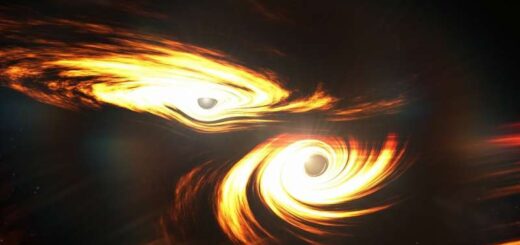Several Unknown Signals From Far Beyond Our Galaxy Detected By Astronomers

Astronomers have detected several unknown signals originating thousands of light years from the planet Earth. The source of these mysterious radio bursts (FRBs) is currently being investigated. Are they of natural origin or signals from an advanced extraterrestrial civilization?
According to scientists from the Green Bank Telescope of West Virginia along with the Arecibo Observatory in Puerto Rico, the signals might come from the Auriga constellation, located about three billion light-years away from the Earth.
A total of 17 such radio signals have been received from this location in space since their discovery in 2007. Now, astronomers have discovered six more bursts of radio signals coming from a place in deep space where similar signals were detected earlier this year and in 2012.
According to an article in the Astrophysical Journal, FRBs are really fast radio signals that last for only a few milliseconds, and can be detected only with special equipment.
These FRBs are very intriguing because even though they exist for such small durations, they tend to generate so much energy that it could parallel the amount of energy generated by the Sun for a whole day!
See also:
Mysterious Star Pulses May Be Alien Signals, Study Claims
Plasma Aliens Could Live Inside “Black Clouds”- Extraterrestrial Life Can Be Stranger Than We Even Dare To Imagine
Life In The Universe Is More Likely In The Future Than Now And Humans Will Arrive First At The Cosmic Party
At this moment scientist cannot explain the multiple radio signals. It is possible these are solar flares rooting from neutron stars which can produce such repeating signals. There are also speculations that there may be a sufficiently advanced extraterrestrial civilization behind them.
However, at this point, without more evidence to go on, researchers cannot say for certain what’s going on.
“Whether FRB 121102 is a unique object in the currently known sample of FRBs, or all FRBs are capable of repeating, its characterisation is extremely important to understanding fast extragalactic radio transients,” the team writes.



 Creators of mankind
Creators of mankind Description of “Tall white aliens”
Description of “Tall white aliens” Where they came from?
Where they came from? About hostile civilizations
About hostile civilizations The war for the Earth
The war for the Earth “Tall white aliens” about eternal life
“Tall white aliens” about eternal life Video: “Nordic aliens”
Video: “Nordic aliens” Aliens
Aliens Alien encounters
Alien encounters The aliens base
The aliens base UFO
UFO Technology UFO
Technology UFO Underground civilization
Underground civilization Ancient alien artifacts
Ancient alien artifacts Military and UFO
Military and UFO Mysteries and hypotheses
Mysteries and hypotheses Scientific facts
Scientific facts


















